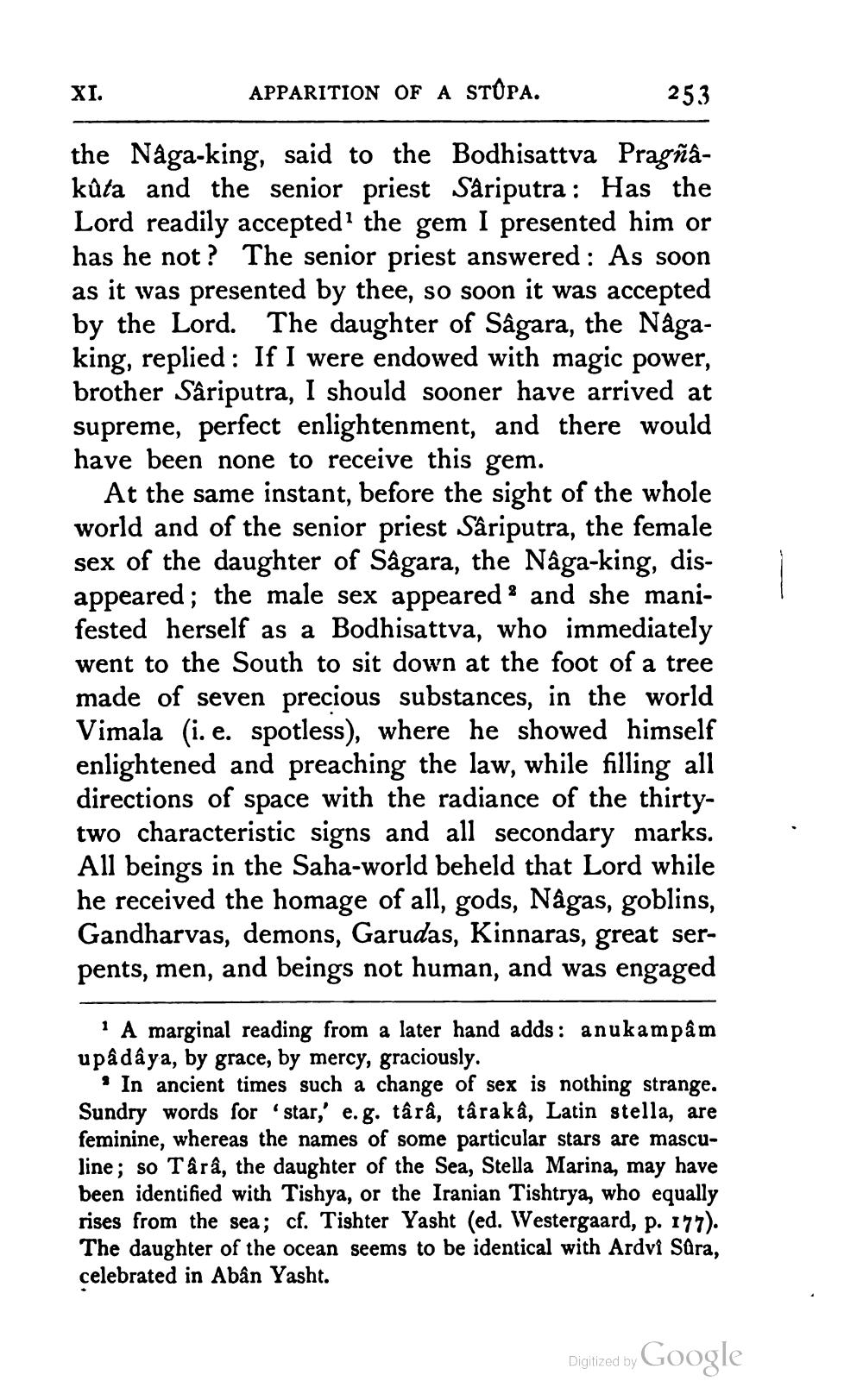________________
XI.
APPARITION OF A STUPA.
253
the Naga-king, said to the Bodhisattva Pragñakûta and the senior priest Sariputra : Has the Lord readily accepted the gem I presented him or has he not? The senior priest answered: As soon as it was presented by thee, so soon it was accepted by the Lord. The daughter of Sâgara, the Nagaking, replied: If I were endowed with magic power, brother Sâriputra, I should sooner have arrived at supreme, perfect enlightenment, and there would have been none to receive this gem.
At the same instant, before the sight of the whole world and of the senior priest Sâriputra, the female sex of the daughter of Sâgara, the Nâga-king, disappeared; the male sex appeared > and she manifested herself as a Bodhisattva, who immediately went to the South to sit down at the foot of a tree made of seven precious substances, in the world Vimala (i. e. spotless), where he showed himself enlightened and preaching the law, while filling all directions of space with the radiance of the thirtytwo characteristic signs and all secondary marks. All beings in the Saha-world beheld that Lord while he received the homage of all, gods, Nagas, goblins, Gandharvas, demons, Garudas, Kinnaras, great serpents, men, and beings not human, and was engaged
A marginal reading from a later hand adds: anukampam upâdâya, by grace, by mercy, graciously.
. In ancient times such a change of sex is nothing strange, Sundry words for star,' e.g. târâ, târaka, Latin stella, are feminine, whereas the names of some particular stars are masculine; so Târâ, the daughter of the Sea, Stella Marina, may have been identified with Tishya, or the Iranian Tishtrya, who equally rises from the sea; cf. Tishter Yasht (ed. Westergaard, p. 177). The daughter of the ocean seems to be identical with Ardvi Sara, celebrated in Abân Yasht.
Digitized by Google




